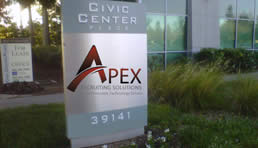




There’s little doubt that this is a good time to be a large motor carrier. Indeed, the tax savings alone the big operators are reaping from changes to U.S. tax laws made last year are astonishing: J.B. Hunt, for one, recorded a $309.2 million decrease in income taxes from deferred tax balances in the fourth quarter of last year as a result of the Tax Cuts and Jobs Act.
Then there’s TL carrier Schneider, which recognized $230 million in tax deferrals in the fourth quarter of 2017. On top of that, its effective tax rate is dropping to 25% this year versus 40% last year, according to the fleet’s year-end earnings report.
For 2017, Schneider pulled in net income of just over $389.9 million on over $4.38 billion in revenue; more than double its net income of $156.9 million on $4.04 billion in revenue reported for 2016.
And Christopher Lofgren, Schneider’s president and CEO, noted in the carrier’s earnings call with analysts that there’s nowhere to go but up in terms of rates and revenues.
“The fourth quarter [of 2017] played out consistent with our expectations regarding customer demand and supply of capacity,” he said. “We saw strong performance from our network for-hire businesses as well as our Logistics business where these segments pivoted, responding to significant price volatility and capacity availability. Price … was strong across all aspects: contract, seasonal premiums and spot.”
“The market conditions throughout the [fourth] quarter were robust with an especially acute … in the month of November,” added Matt Rourke, the carrier’s executive vice president and COO, on the call.
“That is evidenced by nearly a threefold increase in daily order turndowns in our for-hire truckload business as compared to a year ago and a 46% increase in the number of customers seeking spot capacity support from our truck brokerage services,” he said.
“We attribute the demand and the supply tightening to be both a function of increased demand into a healthy economic market condition as well as a tightening of supply further compounded by the ELD [electronic logging device] mandate impacts,” Rourke noted.
J.B. Hunt also sees good times ahead, noting in a 2018 performance expectations slide show that its consolidated revenues should climb 11% to 15% in 2018, with its TL division witnessing a 3% to 7% revenue jump on the low end while its Integrated Capacity Solutions (ICS) division – comprised of freight brokerage, third party logistics, and other non-asset–based services – should experience a 26% to 35% revenue jump, followed by a 10.5% to 16% revenue increased over at its Dedicated Contract Services (DCS) division.
J.B. Hunt also estimates its capital expenditures in 2018 will top $630 million, with $230 million of that aimed at expanding and growing its overall business.
Those are surely signs of a strong freight market for truckers.
But on the other hand …
Cindy Ridders, whose husband is a 49-year veteran truck driver, painted a very different picture based on their ongoing experience with the ELD mandate – one that is hurting their ability to make a living hauling freight.
“The cost factor to a small entity such as ourselves is outrageous,” she explained in written comments to the Federal Motor Carrier Safety Administration (FMCSA) in support of a five-year “small transportation business exemption” to the ELD rule.
“The cost of these [ELDs] run from $200 to $00 with monthly service plans and annual contracts anywhere from $20 to $75 a month,” Ridders explained.
“In order to accommodate shipper and receivers detention times, traffic congestion, weather conditions and searching for ever-elusive truck parking, he thinks his 11 available hours of drive time within the 14 hours [of] overall time will more than likely be reduced to no more than 8 to 9 hours a day [of] driving time,” she stressed. “We cannot generate enough money for us to stay in business at that rate. Compliance with this mandate will force us out of business into early Retirement.”
Bryan Jones of AJB Express LLC out of Eau Galle, WI, said that since the ELD mandate went into effect, he’s now making less money.
“I have found that I have to drive faster than I normally would, which is affecting our fuel consumption, which is affecting our bottom line,” he explained. “Not to mention shippers and receivers are charging outrageous costs of being held up by the ELDs. When I get held up at a dock, or by the weather or an accident, the ELD gives no relief. It’s like you have to live in a perfect world. The ELD cannot compensate for unexpected, unplanned events.”
However, Jim Gattoni, president and CEO of Landstar System, offers a counterpoint of sorts for his company relies exclusively on owner-operators (which Landstar calls “business capacity owners” or “BCOs”) to provide its trucking capacity.
“Revenue in physical 2017 was an annual record of $3.6 billion and exceeded 2016 by 15% on the strength of increased loadings hauled via truck of 9% and increased revenue per load of 6%,” he said during his company’s earnings call with analysts.
“Demand for our services was strong throughout the year. We had record loadings hauled via truck in 2017,” he said. “The number of loads hauled via truck in 2017 first quarter, second quarter and third quarter exceeded the prior-year quarters by 10%, 9%, and 13% respectively, [while] the fourth quarter exceeded prior-year by 3% or 10% when excluding loads from the extra week and favorable timing of Christmas in 2016.”
Gattoni added that revenue per load on loads hauled via truck in 2017 exceeded prior-year by 1%, 3%, 6% and 13% in the first, second, third and fourth quarters of 2017 respectively.
“The strength in spot market pricing that began at the end of the third quarter continued through the remainder of 2017 resulting in revenue per load approaching the record level reached in the fourth quarter of 2014,” he noted.
More importantly, Gattoni pointed out that the tightening of truck capacity that began at the end of the third quarter last year pushed up revenue per load on loads hauled via Landstar’s BCOs by $50 from August through September and then up another $212 per load in December.
“During the first several weeks of 2018, strong volume and elevated pricing continues on our truckload services,” he added. “The number of loads hauled via truck is currently running in a high single digit percentage growth range over the same period in 2017. Revenue per load on loads hauled via truck also continues to be strong in the mid-teen digit percentage range over the same period of 2017.”
Thus far in 2018, then, it’s almost a tale of two trucking industries, especially on the TL side of the ledger. Big fleets are doing well but so are operations that rely on the coordinated work of thousands of independents (Landstar had 9,696 driving trucks for them at the end of the fourth quarter last year).
Yet for some of the small one and two truck operators – the ones that comprise roughly 94% of the TL sector – it’s been rougher sailing.
If an ELD exemption is passed for them, though, those difficult freight waters may smooth out in a hurry.